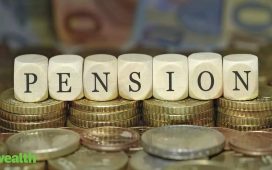UK workers are being told about a tax method which could save money and help keep all of a key benefit if they have children.
The next three years will see more Brits fall into the higher rate tax bracket of 40%, unless Chancellor Rachel Reeves’ freeze on extending tax brackets is lifted.
Dean Butler, managing director for retail direct at Standard Life, said the number of UK taxpayers subject to higher rate income tax has risen 30% in the last four years, up from 4.43 million in 2021-22 to 6.31 million in the 2024-25 tax year.
Butler said taxpayers can reduce their tax bill, save for the future and – if they have children at home – keep claiming child benefit, by paying more into their pension.
Butler said: “Pay rises are great, and a lot of people get them this time of year. However, those whose pay increase lifts their income above £50,271 (or £43,663 in Scotland) may find themselves brought back down to earth upon realising they’ve been pushed into a higher rate tax bracket and are therefore required to pay 40% tax (42% in Scotland) on earnings above this threshold.”
Butler said there were four benefits of paying more into a pension, and all of them had the potential to make families feel better off.
One: Paying more into a pension can help you keep more of your child benefit
Higher rate taxpayers can still claim child benefit, but the amount of child benefit paid starts reducing on an annual income of £60,000. At that point the amount of benefit paid is reduced by 1% for every £200 extra, up to £80,000.
Butler said by paying more into a pension someone could bring their earnings below the £60,000 or £80,000 ceiling. “If they reduced this income to below £80,000, you could get some or all of your child benefit back, while also saving for your future.”
Two: You can claim extra pension tax relief
Butler said UK taxpayers are entitled to tax relief on their own pension payments based on the rate of income tax they pay, with most getting a 20% top-up from the government.
“This means it only costs £80 to pay £100 into your pension. Higher-rate taxpayers can reclaim an extra 20% tax on pension contributions for a total of 40% tax relief, while additional-rate taxpayers are entitled to an extra 25%.
However, higher rate relief doesn’t always happen automatically – you might have to claim it. Depending on how you make your payments, you may need to complete a self-assessment tax return. Tax relief can only be claimed back for the last four tax years.
Three: Paying into your pension to recover your tax-free personal allowance
Your ‘personal allowance’ is the amount of income you don’t have to pay tax on. This is set at £12,570 for the 2024/25 tax year. When your taxable income is more than £100,000, your personal allowance is reduced by £1 for every £2 above this amount, and if your income is £125,140 or more, you lose this allowance altogether. However, paying into a pension plan can offer a solution to this, allowing you to reduce your adjusted net income and helping you recover some or all of your personal allowance, depending on how much you put in.
Four: Consider salary sacrifice
Some workplace pension schemes offer salary sacrifice (or salary exchange). This means agreeing to reduce your salary by a certain amount in exchange for a pension contribution made by your employer. With this reduction in salary resulting in lower National Insurance (NI) contributions and income tax, it can be an effective way of keeping more of your income whilst also saving more for retirement. Butler said: “It’s important to note, however, that salary sacrifice can impact mortgage applications and payments based on your salary like Statutory Maternity pay, so it might not be right for everyone.”











